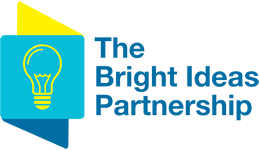Funders will often have many more ‘good’ applications submitted to them than they can fund – their challenge is how to whittle down the huge numbers of applications they receive to the few they can fund. For example, in 2015 Henry Smith Charity received 1,514 applications: whilst they funded 462 applications (a high 30% success rate) they had to reject over 1,000 charities.
Therefore, it is important that for every bid you produce that you do everything you can to not give a funder a reason to reject you, and to make you application ‘stand out’ from the crowd. Here are our top tips for writing a good application, with the best chance of success:
- Check your eligibility carefully – it may be that you meet 4 out of the 5 main criteria – but this may not be enough! If you are in any doubt call the funder and check.
- Follow the funder’s instructions to the letter.
- Write in plain English – avoid jargon.
- Highlight your positive track record!
- Make it clear how the project meets the funder’s criteria. It may seem obvious to you, but if the funder is reviewing hundreds of applications you need to make it crystal clear you are a good match to their interests.
- Demonstrate the need for the project. Many funders are not specialists, so may not understand why your work is important. Consequently, you need to clearly show why your project is needed. Use internal and external statistics, research and quotes from beneficiaries to evidence this need.
- Consult with beneficiaries – do they need the project you want to run? Do they want it? How will they be involved in running and managing the project? This is all crucial information in a funding bid, especially for funders like the Big Lottery, Comic Relief and Children in Need.
- Show the difference your project has made, or will make. As well as outcomes information, show the ‘human face’ of your project by including a good case study.
- Include some good photos, and even some colour (e.g. by including your logo at the top of the application) to make your application more visually appealing and memorable.
- Finally, remember to ask for the funding you need! It is easy to ‘wimp out’ and not directly ask for money, however funders exist to support charities financially. Do make sure you are not asking for too much or too little – if a funder doesn’t specify maximum/average grant sizes, a review of a funder’s accounts at the Charity Commission will usually give you a good idea.
Bright Ideas provides a mentoring service for staff undertaking fundraising who need external advice and support. As part of this, we review applications to ensure they are as strong as possible.
Please get in touch if you would like support and feedback on your in-house funding applications.
Finally, good luck with your funding application!

